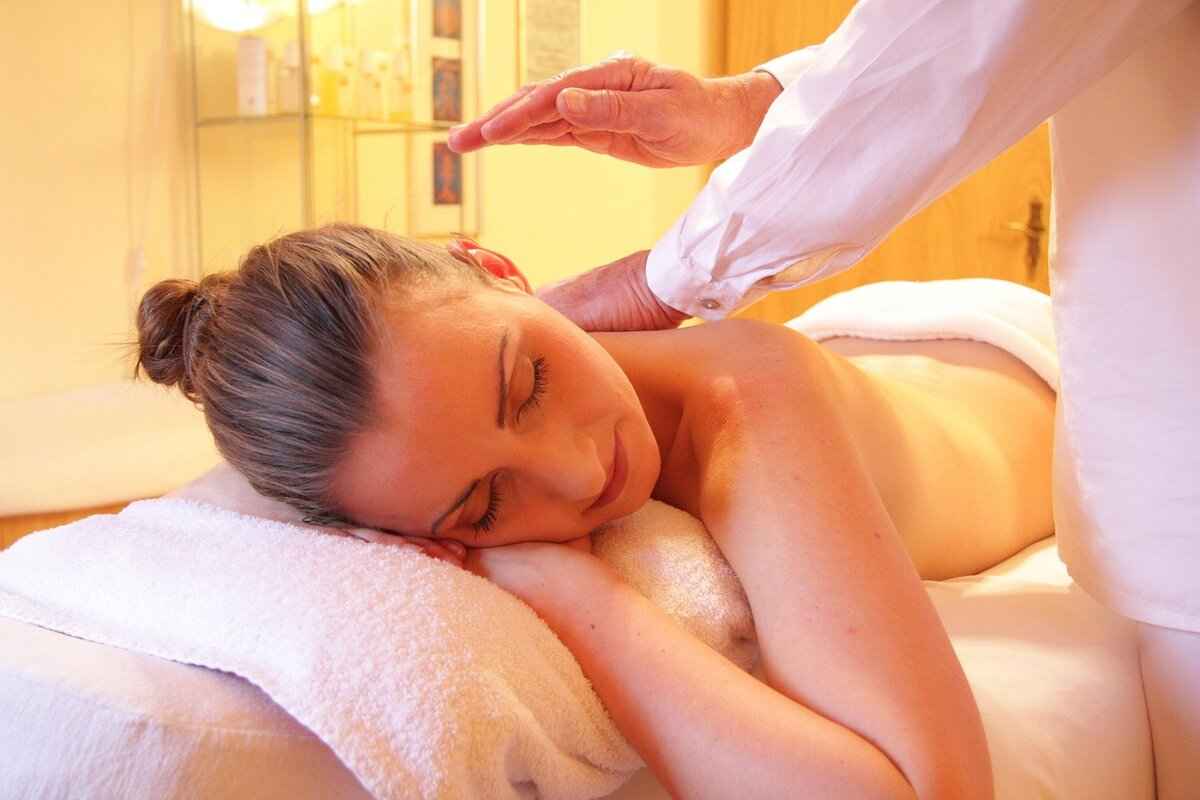This article delves into the diverse world of Asian massage styles, highlighting their unique techniques and benefits. Each style is steeped in rich cultural traditions and offers distinct therapeutic advantages. Understanding these modalities can help you choose the best one to suit your individual needs.
What Are the Different Types of Asian Massages?
Asian massages include a variety of styles, each with specific techniques and philosophies. From the energetic flow of Chinese Tui Na to the mindful approach of Ayurvedic massage, knowing the differences is crucial for selecting the right therapy for your wellness journey.
Traditional Chinese Massage (Tui Na)
Tui Na is a holistic healing practice that emphasizes the flow of energy, or “Qi,” throughout the body. By using a combination of acupressure, kneading, and stretching, Tui Na aims to restore balance and alleviate ailments.
- Techniques Used in Tui Na: This method incorporates various hand techniques to stimulate acupressure points and release muscle tension.
- Benefits of Tui Na: Regular sessions can lead to pain relief, enhanced circulation, and significant stress reduction.
- Who Should Try Tui Na? Ideal for those experiencing chronic pain or seeking a comprehensive approach to health.
Understanding Shiatsu Massage
Shiatsu, a Japanese technique, employs finger pressure along the body’s meridians. This practice not only promotes relaxation but also enhances energy flow, making it beneficial for overall well-being.
What Is Thai Massage?
Thai massage is a unique blend of acupressure and yoga-like stretches. This dynamic approach encourages flexibility and relaxation, appealing to many who lead active lifestyles.
- Key Techniques in Thai Massage: Practitioners utilize their body weight to apply pressure and facilitate deep stretches.
- Health Benefits of Thai Massage: Known for relieving tension and enhancing vitality, it is particularly advantageous for athletes.
Exploring Ayurvedic Massage
Rooted in ancient Indian traditions, Ayurvedic massage focuses on balancing the body’s energies. It often uses warm, herbal oils tailored to individual needs, enhancing the therapeutic experience.
- Techniques and Oils in Ayurvedic Massage: This personalized approach not only promotes relaxation but also aids in detoxification.
- Benefits of Ayurvedic Massage: Regular practice can improve circulation, mental clarity, and overall wellness.

What Are the Different Types of Asian Massages?
Asian massages are renowned for their diverse styles, each offering unique techniques and philosophies that cater to various wellness needs. Understanding the distinctions among these massage types is crucial for selecting the most suitable option for your personal health and relaxation goals.
Here, we highlight some of the most popular types of Asian massages, emphasizing their techniques, benefits, and ideal recipients.
- Traditional Chinese Massage (Tui Na): This ancient practice focuses on balancing the body’s energy, or Qi. Tui Na incorporates techniques such as acupressure, kneading, and stretching to alleviate pain and promote healing.
- Shiatsu Massage: Originating from Japan, Shiatsu uses finger pressure on specific points along the body’s meridians. This technique aims to restore energy flow and is beneficial for stress relief and muscle tension.
- Thai Massage: Known for its dynamic approach, Thai massage combines acupressure and yoga-like stretches. Practitioners use their hands, feet, and body weight to enhance flexibility and relaxation.
- Ayurvedic Massage: Rooted in ancient Indian traditions, this massage emphasizes balance and harmony within the body. It typically involves warm herbal oils tailored to the individual’s constitution, promoting detoxification and mental clarity.
Each of these massage styles offers unique benefits and caters to different needs. For instance, if you are seeking relief from chronic pain, Tui Na or Ayurvedic Massage may be ideal. Conversely, if you are looking to enhance flexibility and relaxation, Thai Massage could be the right choice.
In conclusion, understanding the various types of Asian massages allows you to make an informed decision tailored to your wellness journey. Whether you seek relaxation, pain relief, or holistic health, there is an Asian massage style that aligns with your needs.

Traditional Chinese Massage (Tui Na)
is an ancient therapeutic practice that has its roots deeply embedded in Chinese medicine. This massage technique is not just about physical manipulation; it emphasizes the flow of Qi (or energy) throughout the body. By restoring balance and harmony, Tui Na aims to enhance overall health and well-being.
Tui Na incorporates a variety of techniques designed to target specific points and meridians within the body. These include:
- Acupressure: Applying pressure to specific points to release blockages and stimulate energy flow.
- Kneading: Gentle, rhythmic motions that relax muscles and improve circulation.
- Stretching: Techniques that enhance flexibility and relieve tension in the muscles.
These methods work synergistically to promote healing and restore balance to the body’s energy systems.
The benefits of Tui Na are extensive and multifaceted. Some of the key advantages include:
- Pain Relief: Particularly effective for chronic pain conditions such as back pain, arthritis, and headaches.
- Improved Circulation: Enhances blood flow, which can aid in quicker recovery from injuries.
- Stress Reduction: Promotes relaxation, helping to alleviate stress and anxiety levels.
These benefits contribute to a holistic approach to health, making Tui Na a valuable addition to any wellness routine.
Tui Na is suitable for a wide range of individuals, particularly those who are:
- Seeking relief from physical ailments.
- Interested in holistic health approaches.
- Athletes looking to enhance recovery and performance.
Whether you are dealing with chronic pain or simply want to relax, Tui Na offers a unique and effective solution.
Techniques Used in Tui Na
Tui Na is a traditional Chinese therapeutic massage that incorporates a variety of techniques aimed at promoting health and well-being. Among its core methods are acupressure, kneading, and stretching, each designed to facilitate the flow of energy, or “Qi,” throughout the body.
Acupressure is a pivotal component of Tui Na. It involves applying pressure to specific points along the body’s meridians, which are pathways through which energy flows. By stimulating these points, practitioners aim to release blockages and restore balance, ultimately enhancing the body’s natural healing processes.
Another essential technique is kneading, which involves rhythmic compression and manipulation of the muscles. This method not only helps to alleviate muscle tension but also promotes circulation and relaxation. Kneading can be particularly effective in targeting areas of chronic pain and stiffness, providing immediate relief and a sense of rejuvenation.
Stretching techniques in Tui Na are designed to improve flexibility and range of motion. By gently stretching the muscles and joints, practitioners can help to release tension and enhance mobility. This aspect of Tui Na is especially beneficial for athletes or individuals with active lifestyles, as it aids in recovery and prevents injuries.
In summary, Tui Na employs a combination of these techniques to create a holistic approach to health. By focusing on unblocking energy channels, it not only addresses physical ailments but also promotes overall well-being. Whether you seek relief from specific conditions or are looking to enhance your general health, Tui Na offers a comprehensive solution that aligns with the principles of traditional Chinese medicine.
Benefits of Tui Na
Tui Na, a traditional Chinese therapeutic massage, is renowned for its ability to address a wide range of health concerns. This ancient practice is not just about relaxation; it offers a plethora of health benefits that can significantly enhance your overall well-being.
One of the most notable is its capacity for pain relief. Whether you are suffering from chronic back pain, migraines, or muscle tension, Tui Na employs specific techniques that target the root causes of discomfort. By applying pressure to key acupressure points, this massage style helps to alleviate pain and promote healing.
Moreover, Tui Na is particularly effective in improving circulation. The massage techniques stimulate blood flow, which can lead to better oxygenation of tissues and enhanced nutrient delivery throughout the body. Improved circulation not only aids in recovery from injuries but also contributes to a more vibrant and energetic feeling overall.
In addition to physical benefits, Tui Na is also a powerful tool for stress relief and relaxation. The rhythmic movements and focused pressure help to calm the mind and release tension stored in the body. Many practitioners report a profound sense of tranquility following their sessions, making it an excellent choice for those dealing with the pressures of daily life.
- Chronic Pain Management: Effective for conditions like arthritis and fibromyalgia.
- Enhanced Flexibility: Regular sessions can improve joint mobility.
- Stress Reduction: Promotes relaxation and mental clarity.
- Holistic Healing: Addresses both physical and emotional issues.
In summary, Tui Na is not just a massage; it is a holistic approach to health that offers pain relief, improved circulation, and enhanced relaxation. Whether you are an athlete looking for recovery or someone seeking relief from stress, Tui Na can be a valuable addition to your wellness routine.
Who Should Try Tui Na?
Tui Na, a renowned therapeutic massage technique from China, is gaining popularity among various demographics. It is ideal for individuals seeking relief from a range of physical ailments or those who are drawn to holistic health approaches. This massage style is particularly advantageous for athletes and active individuals, as it addresses both physical and energetic imbalances.
One of the primary reasons athletes and fitness enthusiasts benefit from Tui Na is its ability to promote muscle recovery. The various techniques employed in Tui Na, such as kneading, acupressure, and stretching, help to alleviate tension, reduce soreness, and enhance blood circulation. This can lead to quicker recovery times after strenuous workouts or competitions.
Moreover, Tui Na is not solely for those engaged in sports. Individuals experiencing chronic pain, such as back pain or joint stiffness, can find significant relief through this massage technique. By targeting specific pressure points and energy channels, Tui Na can help to relieve pain and restore mobility.
For those interested in a more holistic approach to health, Tui Na offers a unique blend of physical and energetic healing. It encourages the flow of Qi (energy) throughout the body, which is essential for maintaining overall health and well-being. This makes Tui Na an excellent choice for anyone looking to enhance their mental and physical health.
In summary, Tui Na is a versatile massage technique that caters to a wide audience. Whether you are an athlete aiming for optimal performance, someone dealing with chronic pain, or simply interested in holistic health, Tui Na can provide valuable benefits that promote healing and balance.
Understanding Shiatsu Massage
is essential for anyone looking to explore holistic healing practices. Shiatsu, a traditional Japanese massage technique, focuses on applying finger pressure to specific points along the body’s meridians, which are pathways that channel energy. This method is deeply rooted in the principles of Traditional Chinese Medicine and emphasizes the balance of energy, or “ki,” within the body.
The fundamental principle of Shiatsu is to restore harmony and promote healing by releasing blockages in the energy flow. Practitioners use their fingers, palms, and sometimes elbows or knees to apply pressure, creating a therapeutic effect that can alleviate various physical and emotional ailments.
| Key Benefits of Shiatsu Massage | Description |
|---|---|
| Pain Relief | Shiatsu is effective in reducing chronic pain, including back pain, headaches, and joint discomfort. |
| Stress Reduction | This massage technique promotes relaxation and helps to lower stress levels, enhancing overall mental well-being. |
| Improved Circulation | By stimulating the flow of blood and energy, Shiatsu can enhance circulation and boost vitality. |
| Enhanced Flexibility | The stretching techniques used in Shiatsu can improve flexibility and relieve muscle tension. |
Shiatsu is particularly beneficial for individuals dealing with stress, anxiety, or physical discomfort. It is a gentle yet powerful therapy that can be adapted to suit various needs and preferences. Many people find that regular Shiatsu sessions not only provide immediate relief but also contribute to long-term health improvements.
In summary, Shiatsu is more than just a massage; it is a holistic approach that nurtures both the body and mind. By understanding its principles and therapeutic effects, individuals can make informed decisions about incorporating this practice into their wellness routines.

What Is Thai Massage?
Thai massage is a traditional healing practice that has gained popularity worldwide for its unique blend of techniques and holistic approach. Originating from Thailand, this ancient form of bodywork combines elements of acupressure, yoga-like stretching, and energy manipulation, creating a comprehensive treatment that addresses both physical and mental well-being.
The essence of Thai massage lies in its dynamic approach. Unlike many Western massage styles that primarily focus on relaxation, Thai massage aims to enhance flexibility and restore balance within the body. Practitioners utilize their hands, feet, and even their body weight to apply pressure along the body’s energy lines, known as Sen lines. This method not only alleviates muscle tension but also promotes the flow of energy throughout the body.
- Acupressure: Targeting specific points on the body to relieve tension and pain.
- Stretching: Incorporating yoga-like stretches to improve flexibility and mobility.
- Breathing Techniques: Encouraging deep, mindful breathing to enhance relaxation and energy flow.
Thai massage offers a plethora of health benefits, making it an excellent choice for individuals seeking both relaxation and rejuvenation. Some of the notable benefits include:
- Improved Flexibility: Regular sessions can significantly enhance your range of motion.
- Stress Relief: The combination of stretching and acupressure promotes deep relaxation.
- Enhanced Circulation: The techniques used stimulate blood flow, aiding in overall health.
- Boosted Energy Levels: By balancing the body’s energy, clients often report feeling revitalized.
In summary, Thai massage is not just a physical treatment; it’s a holistic experience that fosters both mental clarity and physical vitality. Whether you are an athlete looking to improve performance or someone seeking to alleviate stress, Thai massage offers a versatile solution tailored to individual needs.
Key Techniques in Thai Massage
Thai massage is a unique and ancient practice that combines various techniques to promote physical and mental well-being. One of the most distinctive aspects of Thai massage is its dynamic approach, which integrates acupressure, yoga-like stretches, and rhythmic movements. This section will delve into the key techniques employed in Thai massage, emphasizing how they contribute to overall health.
- Use of Body Weight: Practitioners utilize their body weight to apply pressure effectively. This method allows for deeper and more sustained pressure on the muscles, enhancing relaxation and relieving tension.
- Hands, Feet, and Elbows: Thai massage therapists use their hands, feet, and even elbows to target specific areas of the body. This multi-faceted approach enables them to deliver varying intensities of pressure, catering to the client’s comfort level.
- Stretching Techniques: The incorporation of yoga-like stretches is a hallmark of Thai massage. These stretches not only improve flexibility but also promote a sense of balance and energy flow throughout the body.
- Energy Line Focus: Thai massage is rooted in the concept of energy lines, known as “Sen.” Practitioners work along these lines to unblock energy flow, which is believed to enhance physical health and emotional well-being.
- Breath Coordination: Throughout the session, clients are encouraged to synchronize their breathing with the movements of the therapist. This connection between breath and movement fosters a deeper state of relaxation and mindfulness.
Overall, the key techniques in Thai massage work synergistically to create a holistic experience. By combining pressure, stretching, and breath, this massage style not only alleviates physical tension but also promotes mental clarity and emotional balance. Whether you are seeking relief from stress or looking to enhance your flexibility, Thai massage offers a comprehensive approach to wellness.
Health Benefits of Thai Massage
Thai massage is a time-honored practice that merges various techniques to provide a holistic approach to wellness. This ancient form of therapy, originating from Thailand, combines elements of acupressure, yoga-like stretching, and energy work. It is uniquely designed to promote both physical and mental well-being, making it a popular choice for individuals seeking relief from stress and tension.
One of the primary is its ability to alleviate tension in the body. The massage techniques used help to release tight muscles and reduce stress levels, allowing for a deeper sense of relaxation. This is particularly beneficial for those who lead a busy lifestyle or experience chronic stress.
Additionally, Thai massage is renowned for its role in improving flexibility. The incorporation of stretching techniques mimics yoga poses, encouraging the body to become more limber. Regular sessions can enhance joint mobility and increase overall physical performance, which is especially advantageous for athletes or those engaged in physical activities.
Moreover, Thai massage is believed to enhance overall vitality by promoting energy flow throughout the body. Practitioners utilize their hands, feet, and body weight to apply pressure along energy lines, known as Sen lines. This process helps to unblock energy pathways, resulting in increased energy levels and improved mental clarity.
In summary, Thai massage is a multifaceted therapy that not only alleviates tension and enhances flexibility but also revitalizes the body’s energy. It is highly recommended for individuals with active lifestyles or anyone looking to improve their overall health and vitality. Whether you are an athlete or simply seeking relaxation, Thai massage offers a comprehensive approach to well-being.

Exploring Ayurvedic Massage
Ayurvedic massage, a vital aspect of the ancient Indian healing system known as Ayurveda, emphasizes achieving balance and harmony within the body. This holistic approach integrates physical, mental, and spiritual well-being, making it a comprehensive therapy for various health issues.
Techniques and Oils in Ayurvedic Massage
Ayurvedic massage employs a variety of techniques that focus on stimulating the body’s energy points, or marma points, which are similar to acupressure points in other traditions. The massage typically involves:
- Kneading: Gentle yet firm pressure is applied to relieve tension and promote relaxation.
- Long strokes: These strokes help enhance blood circulation and lymphatic drainage.
- Joint mobilization: This technique aids in improving flexibility and reducing stiffness.
Additionally, the use of warm, herbal-infused oils tailored to the individual’s constitution (or dosha) is a hallmark of Ayurvedic massage. Common oils include sesame, coconut, and almond oil, each with unique therapeutic properties.
Benefits of Ayurvedic Massage
The therapeutic benefits of Ayurvedic massage are extensive. Regular sessions can:
- Improve circulation: Enhanced blood flow helps in the delivery of nutrients and oxygen to the body’s tissues.
- Detoxify the body: The massage aids in eliminating toxins and promoting overall health.
- Enhance mental clarity: By reducing stress and anxiety, this massage fosters a sense of calm and mental focus.
Moreover, Ayurvedic massage is particularly beneficial for individuals seeking holistic health solutions, as it addresses not just physical ailments but also emotional and spiritual imbalances.
In summary, Ayurvedic massage stands as a profound practice rooted in ancient wisdom, offering a pathway to rejuvenation and holistic wellness.
Techniques and Oils in Ayurvedic Massage
Ayurvedic massage is a holistic practice that draws from ancient Indian traditions, emphasizing the importance of balance and harmony within the body. This unique form of massage utilizes a variety of techniques and specially formulated oils, making it a deeply personalized experience for each individual.
One of the most distinctive aspects of Ayurvedic massage is the use of warm herbal oils. These oils are carefully selected based on the individual’s dosha, which is a concept in Ayurveda that categorizes people into three primary body types: Vata, Pitta, and Kapha. Each dosha has its own unique characteristics and imbalances, and the oils are tailored to address these specific needs. For instance, a person with a Vata constitution may benefit from warming oils such as sesame or almond, while someone with a Pitta constitution might find soothing oils like coconut or olive more beneficial.
The massage techniques employed in Ayurvedic practice include a combination of long strokes, kneading, and gentle pressure. These methods not only promote relaxation but also stimulate the flow of energy throughout the body, enhancing the overall therapeutic effect. The warm oils help to nourish the skin and allow for deeper penetration of the massage techniques, leading to improved circulation and detoxification.
- Long strokes: These are used to warm up the muscles and promote relaxation.
- Kneading: This technique helps to release tension and improve flexibility.
- Gentle pressure: Applied to specific points to balance energy flow.
Moreover, the incorporation of herbal ingredients in the oils not only enhances the massage experience but also provides additional therapeutic benefits. For example, oils infused with herbs like ashwagandha or turmeric can offer anti-inflammatory properties, while others may support mental clarity and emotional balance.
In conclusion, Ayurvedic massage stands out due to its personalized approach, utilizing tailored oils and techniques that cater to the unique needs of each individual. This comprehensive method not only addresses physical ailments but also promotes overall wellness, making it a valuable addition to any holistic health regimen.
Benefits of Ayurvedic Massage
Ayurvedic massage is a holistic healing practice rooted in the ancient Indian system of medicine known as Ayurveda. This traditional therapy emphasizes the importance of balancing the body’s energies, or doshas, to achieve optimal health. The benefits of Ayurvedic massage extend far beyond mere relaxation, making it a valuable option for those seeking comprehensive wellness solutions.
One of the primary advantages of Ayurvedic massage is its ability to improve circulation. The techniques employed in this practice stimulate blood flow, ensuring that vital nutrients and oxygen reach every part of the body. Enhanced circulation can lead to improved overall health, as it supports the body’s natural healing processes.
Moreover, Ayurvedic massage is renowned for its detoxifying effects. The use of warm, herbal oils not only nourishes the skin but also aids in the elimination of toxins that accumulate in the body. This detoxification process is essential for maintaining a healthy immune system and promoting longevity.
In addition to physical benefits, Ayurvedic massage significantly contributes to mental clarity. The calming nature of the massage, combined with the soothing properties of the oils used, helps to reduce stress and anxiety levels. Clients often report a sense of peace and tranquility following their sessions, which can enhance focus and cognitive function in daily life.
- Holistic Health: Ayurvedic massage promotes a holistic approach to health, addressing both physical and mental well-being.
- Customized Treatments: Each session can be tailored to an individual’s specific needs, enhancing the effectiveness of the therapy.
- Stress Relief: Regular sessions can help manage stress, leading to improved emotional health and resilience.
Overall, Ayurvedic massage is particularly beneficial for those seeking holistic health and wellness solutions. Its comprehensive approach to healing makes it an excellent choice for individuals looking to enhance their physical vitality and mental clarity.
Frequently Asked Questions
- What is Tui Na massage?
Tui Na is a traditional Chinese therapeutic massage that focuses on balancing energy flow in the body. It uses techniques like acupressure, kneading, and stretching to promote healing and overall well-being.
- How does Shiatsu differ from other massage styles?
Shiatsu, a Japanese massage technique, uses finger pressure on specific points along the body’s meridians. Unlike other styles, it emphasizes energy flow and often incorporates gentle stretching for a holistic experience.
- What are the main benefits of Thai massage?
Thai massage is renowned for alleviating tension, enhancing flexibility, and boosting overall vitality. It’s particularly beneficial for those with active lifestyles, as it combines acupressure and yoga-like stretches.
- What makes Ayurvedic massage unique?
Ayurvedic massage is rooted in ancient Indian healing practices and focuses on achieving balance within the body. It often uses warm herbal oils tailored to individual needs, enhancing its therapeutic effects.
- Who should consider getting a massage?
Anyone looking for relaxation, pain relief, or improved overall health can benefit from massage. Specific styles may be more suitable depending on individual needs, such as athletes benefiting from Tui Na or Thai massage.














